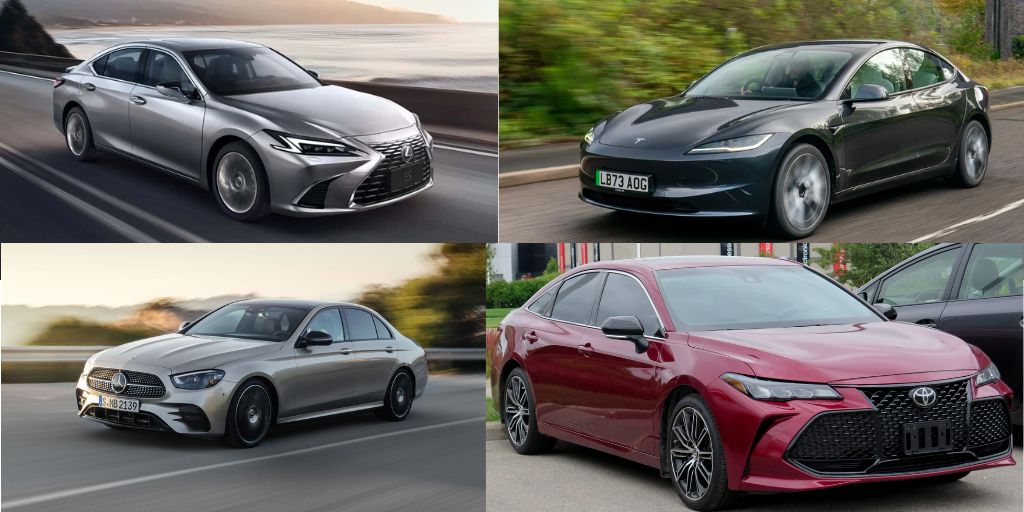When people talk about a comfortable driving experience, one feature often overlooked is cabin noise. A quiet cabin can completely change how you feel during daily commutes or long road trips. It lets you enjoy music, have clear conversations, and simply relax.
On the other hand, a car with too much road noise, wind noise, or creaks can be exhausting and distracting—even if the vehicle runs well.
This article explores both sides of that experience. We’ll start with five cars known for their quiet cabins.
These vehicles use sound-deadening materials, refined engines, and solid build quality to keep the noise outside. They offer peace and comfort for drivers and passengers alike.
Then, we’ll shift to five cars that are known for being loud and creaky inside. These vehicles may be popular for other reasons—like performance or affordability—but their cabin noise levels can be a deal-breaker for anyone seeking a calm ride.
In some cases, it’s due to poor insulation; in others, it’s the result of aging parts and weak interior build.
Whether you value peace and quiet or want to avoid a noisy mistake, this guide will help you choose wisely.
Also Read: 5 Cars That Still Drive Like New After 200K Miles and 5 That Don’t
5 Cars With Quiet Cabins
One of the most valued features among car buyers today is a In the world of modern driving, comfort goes far beyond soft seats and advanced tech. One of the most valued features among car buyers today is a quiet cabin.
Whether you’re commuting to work, going on a road trip, or simply enjoying a calm drive through the city, noise levels inside your car can make or break the experience. A peaceful, quiet cabin offers a sense of luxury, no matter the vehicle’s price tag.
Automakers understand that sound matters. Some go to great lengths to reduce engine noise, road vibrations, and wind turbulence.
They install thick window glass, use sound-absorbing insulation, and fine-tune the suspension to create a smooth and hushed ride. For many drivers, especially those who spend a lot of time behind the wheel, these touches make all the difference.
In this section, we focus on five cars that are known for delivering an impressively quiet ride.
These aren’t just expensive luxury sedans—we’ve included a mix of brands and models that offer silence as part of the driving experience. Some use advanced noise-canceling systems. Others rely on brilliant design and insulation.
We selected these cars based on expert reviews, road test data, and real owner feedback. Each vehicle on this list has earned praise for creating a cabin environment where outside noise fades away.
If you value peace, relaxation, and the ability to enjoy your favorite music or podcasts without distraction, these cars are made for you.
Let’s explore the five models that stand out in the market for their whisper-quiet cabins and smooth, serene driving experience.
1. Lexus ES (2019–Present)
The Lexus ES is one of the best examples of how silence can equal luxury. Since its 2019 redesign, the ES has impressed drivers and reviewers with its incredibly quiet cabin.
Even when driving at highway speeds, the interior stays calm and peaceful. Lexus engineers made cabin noise control a top priority for this generation, and it shows in every detail.
To begin with, the ES uses thick acoustic glass in the front side windows and windshield. This blocks out wind and traffic noise effectively.
The underbody has extra sound insulation panels, and the door seals are built to keep out both air and vibration. Even the engine mounts are designed to reduce the buzz of the powertrain.
Lexus also focused on using high-quality materials that don’t creak or rattle over time. The doors shut with a soft, solid “thunk,” and the seats and dash are wrapped in plush materials that feel premium and tight-fitting.
When driving over rough roads or bumpy highways, the suspension soaks up imperfections quietly, avoiding the thumps and squeaks you’d hear in less refined cars.
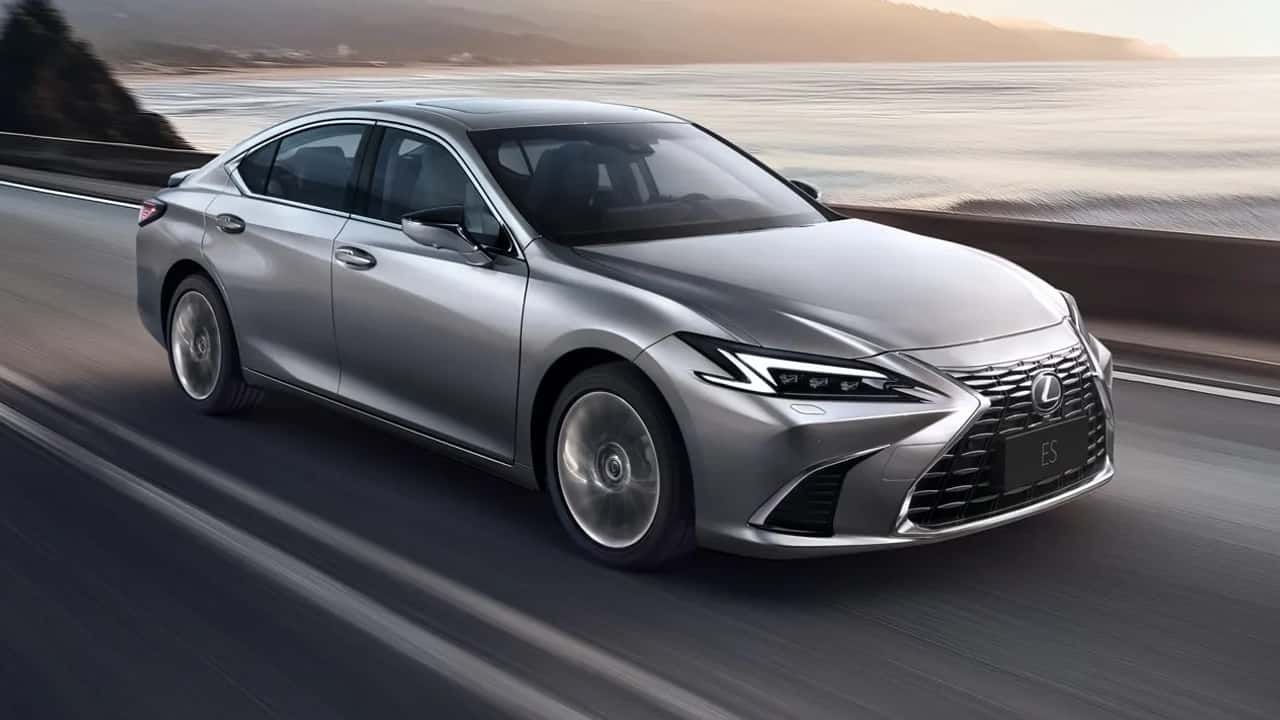
In addition, the engine in the ES is tuned for smoothness over performance. Whether it’s the four-cylinder, the V6, or the hybrid version, all powertrains run quietly even under acceleration. The car barely makes a sound at idle, making it feel more like an electric vehicle in traffic.
If you’re looking for a mid-size sedan that brings calmness and quiet to your daily drive, the Lexus ES is one of the best in the business.
2. Tesla Model 3 (2021–Present)
The Tesla Model 3 from 2021 onward has made strong improvements in cabin noise control, making it one of the quietest electric vehicles (EVs) on the market today.
While earlier versions of the Model 3 were criticized for letting in too much road and wind noise, Tesla listened to feedback and significantly upgraded its insulation and window materials starting with the 2021 refresh.
The most important change was the addition of double-pane acoustic glass for the front windows. This small but powerful update helped reduce outside sound, especially wind noise at highway speeds.
The car’s frame was also improved for better sealing, helping reduce cabin vibrations and creaks that were common in earlier builds.
Because the Model 3 is fully electric, it naturally lacks engine noise. But Tesla didn’t stop there—it improved the build quality by using better materials and more solid panel connections. These upgrades contribute to a tighter, quieter interior.
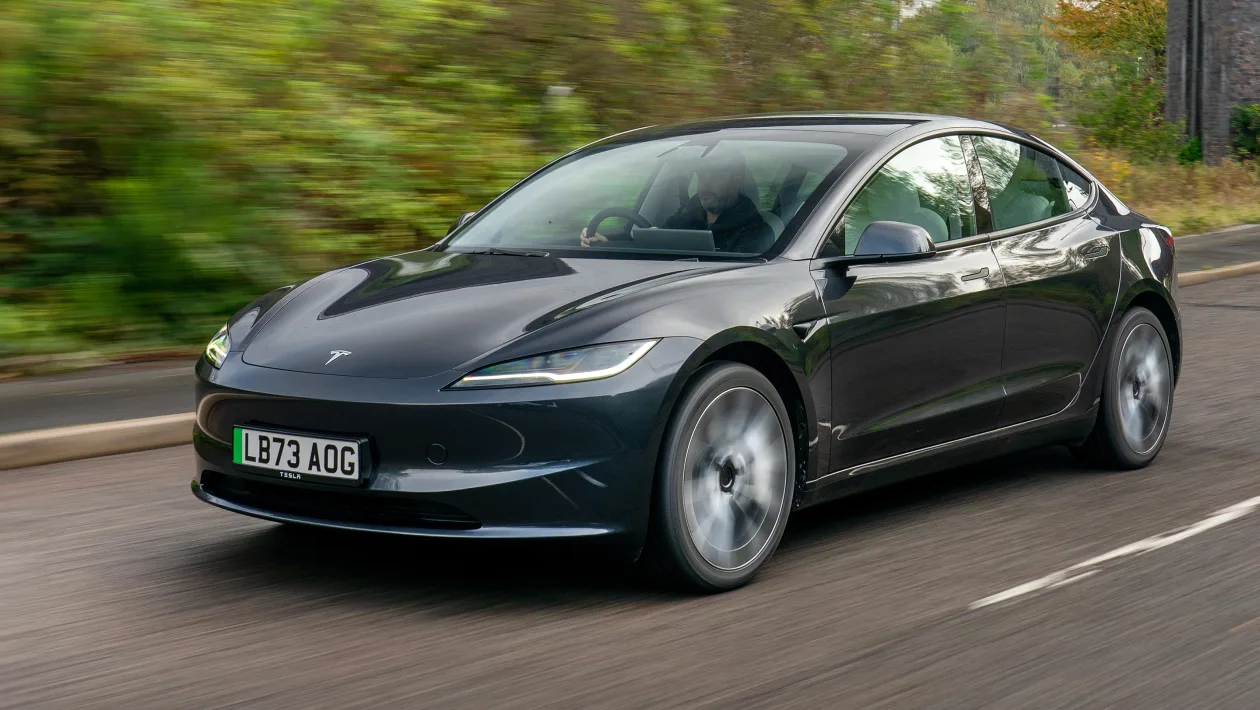
Owners also report that software updates even control how the car’s motors behave under acceleration, smoothing out their performance to keep the ride more peaceful.
Another reason the Model 3 feels so quiet is its minimalist interior. There are fewer buttons, gaps, and seams where noise can develop over time. The clean dash design and firm construction mean fewer rattles, even after years of daily use.
For drivers looking for silence with a touch of futuristic style, the newer Tesla Model 3 offers an impressively quiet driving experience—especially compared to other cars in its class.
3. Mercedes-Benz E-Class (2017–2023)
The Mercedes-Benz E-Class has long been seen as a benchmark for comfort and refinement in the mid-size luxury segment. The 2017–2023 generation, in particular, stands out for its near-silent cabin.
Mercedes focused heavily on acoustic comfort in this model, and the results are clear the moment you close the door—it’s like stepping into a luxury cocoon.
This E-Class uses extensive sound-deadening insulation throughout the floor, firewall, and wheel wells. The windows feature dual-pane acoustic glass that blocks outside noises, including wind and passing vehicles.
The sealing around the doors and windows is exceptionally tight, and even the trunk has insulation to prevent echoes and vibrations from entering the cabin.
What really elevates the E-Class is the quality of its interior materials. Everything is soft-touch, tightly secured, and built to last. There are no cheap plastics or loose panels that can create creaks over time.
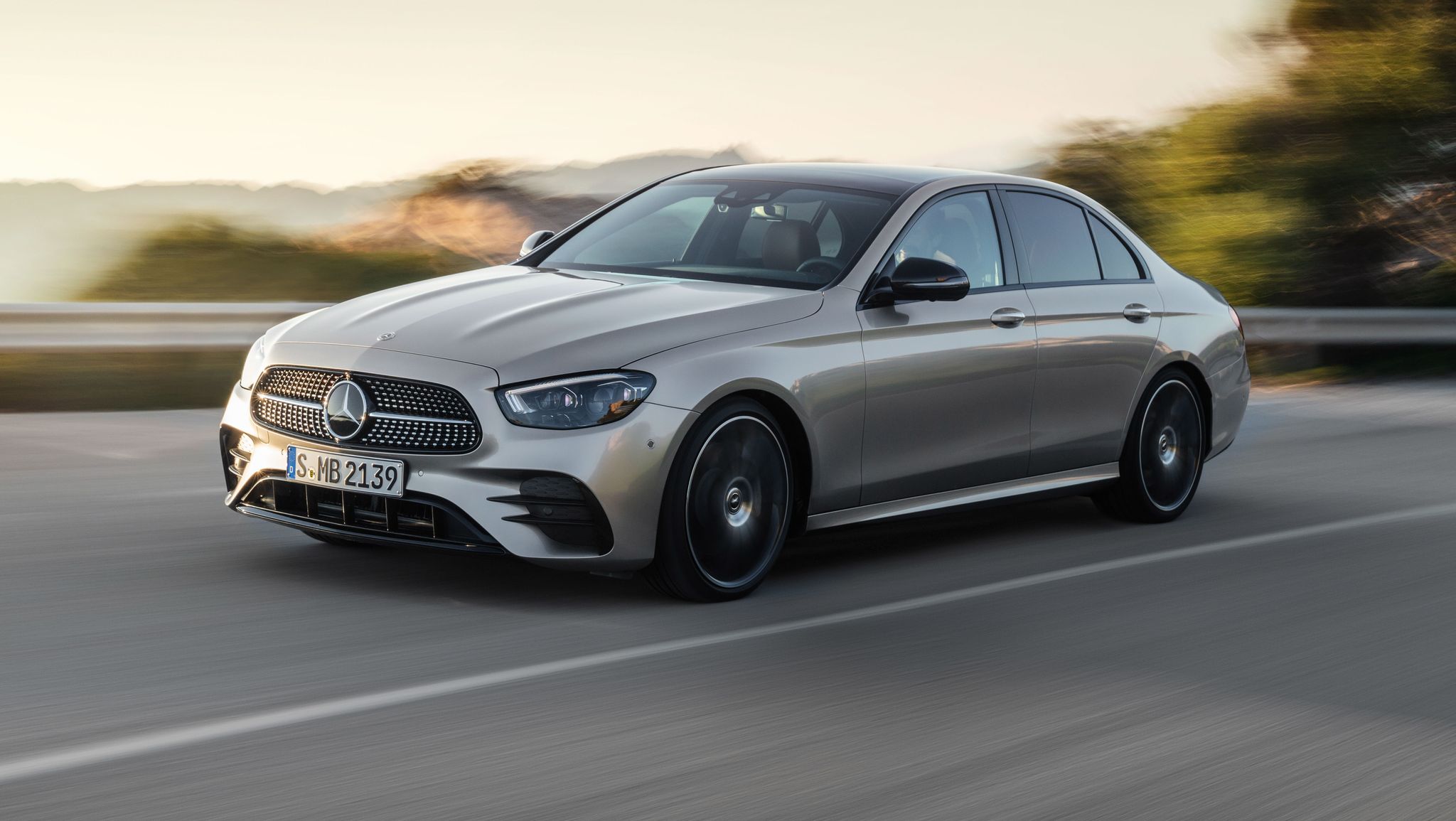
The suspension system also plays a major role—Mercedes’ air suspension option glides over bumps and potholes with grace, preventing jarring noises from entering the cabin.
Another strength of the E-Class is its quiet engine operation. Whether you choose a turbocharged four-cylinder, six-cylinder, or diesel version, all engines are well insulated and tuned for smooth, quiet performance. At cruising speeds, engine noise is barely noticeable.
If you’re in search of a luxury sedan that combines class, comfort, and an ultra-quiet interior, the E-Class from this generation is a top-tier choice that continues to impress year after year.
4. Toyota Avalon (2019–2022)
The Toyota Avalon from 2019 to 2022 delivers a surprisingly premium and quiet ride, making it one of the most underrated large sedans when it comes to cabin comfort.
Though not a luxury brand, Toyota designed the Avalon with upscale appeal—and part of that experience is a calm, quiet interior that rivals some entry-level luxury cars.
The Avalon benefits from impressive sound insulation throughout the body. It features underbody panels, thicker door seals, and extra padding in the floor and firewall areas. These help reduce both road noise and vibrations from entering the cabin.
In addition, the windshield and front side windows are laminated with acoustic glass, which keeps wind and engine noise to a minimum even at highway speeds.
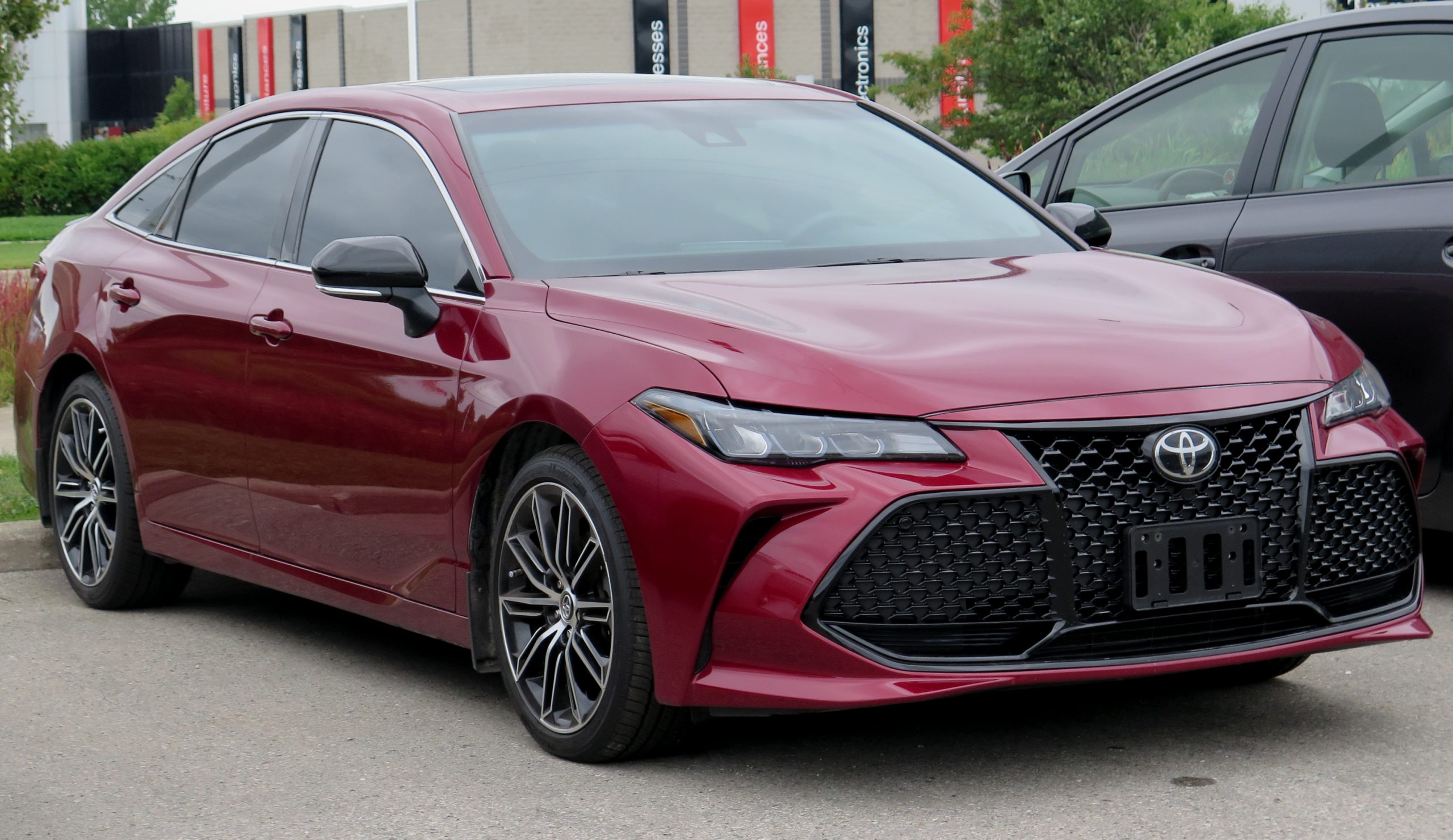
Toyota also paid attention to engine refinement. Whether you choose the 3.5-liter V6 or the hybrid model, both powertrains are tuned for quiet operation.
The V6 is smooth and hushed under light acceleration, while the hybrid model is nearly silent during low-speed city driving, making it especially relaxing in stop-and-go traffic.
Inside, the Avalon feels well-built and solid. The materials are soft, and the fit-and-finish reduces creaks and rattles, even after years of use.
The cabin layout also helps; it has wide, comfortable seats and a roomy interior that keeps passengers away from outside contact points, further reducing perceived noise.
If you’re looking for near-luxury quietness without the luxury price tag, the 2019–2022 Toyota Avalon is a refined, peaceful sedan worth considering.
5. Lincoln Continental (2017–2020)
The Lincoln Continental from 2017 to 2020 marked the brand’s return to full-size luxury sedans, and it came with one standout strength—a whisper-quiet cabin.
Lincoln engineers put major focus on noise reduction, and it’s clear the moment you step inside. This car is designed to provide a smooth, serene ride where the outside world simply fades away.
One of the main reasons for the quiet interior is the use of Active Noise Control. This technology works like noise-canceling headphones.
Microphones pick up unwanted sounds in the cabin, and the system sends out opposing sound waves to cancel them out. It’s especially effective at reducing low-frequency engine and road noise.
The Continental also features acoustic laminated glass for all windows—not just the windshield and front doors. This gives it an edge over many competitors.
Combined with thick door seals, heavy sound-deadening materials in the floor and ceiling, and soft-close doors, the interior stays calm and quiet at all times.
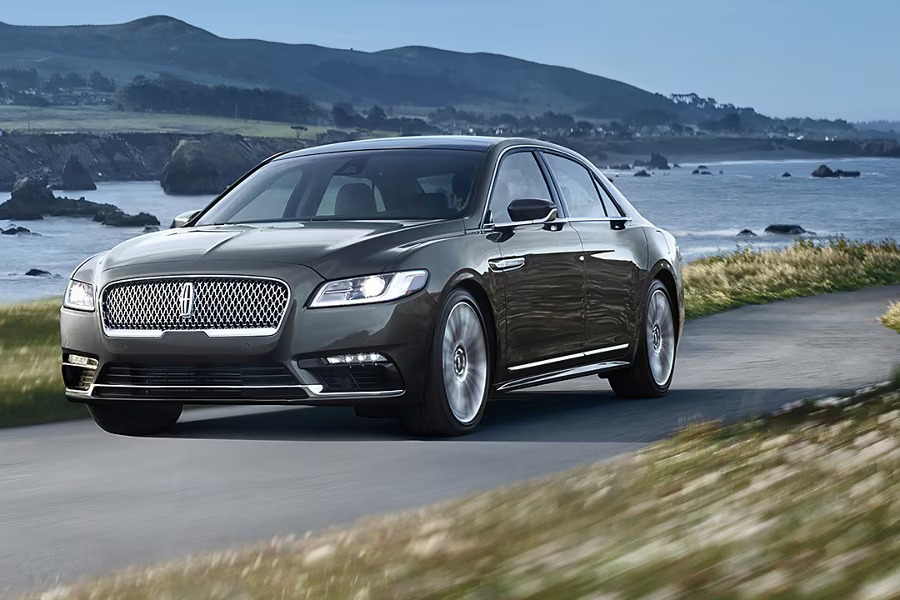
The suspension system is tuned for comfort rather than sportiness, meaning it glides over bumps without jarring noises. Engine options, including the twin-turbo V6, are powerful yet smooth and quiet, even under pressure.
Lincoln also chose top-tier interior materials to reduce squeaks and rattles. From real wood trim to soft leather seating, everything feels tightly fitted and luxurious. If a peaceful driving experience is what you want, the Lincoln Continental delivers with elegance.
5 Cars That Are Loud and Creaky
While some cars are built to provide a calm, serene driving experience, others can make the ride feel more like an obstacle course—especially when it comes to cabin noise.
A loud and creaky cabin can ruin an otherwise enjoyable driving experience, making even the smoothest roads seem bumpy and uncomfortable.
It’s not just a matter of sound; these noises can signal issues with build quality or a lack of attention to detail in the car’s design.
In this section, we focus on five cars that are known for being loud and creaky inside, whether due to poor sound insulation, low-quality interior materials, or simply age and wear.
These cars may have other redeeming qualities, but the noise inside can make long drives frustrating for those who value quiet and comfort.
Some vehicles on this list may have once been known for their affordability or sporty appeal, but over time, they’ve become notorious for their noisy cabins. Issues like rattling plastic panels, squeaky seats, and engine noise creeping into the interior can leave drivers and passengers feeling unsettled.
It’s also worth noting that in some cases, the noise becomes more prominent as the car ages.
Wear and tear on the door seals, suspension, and other components can lead to increased cabin noise, which is why some cars that start relatively quiet may become noisy with time.
Whether you’re shopping for a used car or just curious about how certain models age, this list will guide you through the loudest and most creaky cabins that may make you think twice before purchasing.
1. Nissan Sentra (2016–2020)
The Nissan Sentra has long been known for its affordability, but when it comes to cabin comfort, it falls short—particularly in the noise department.
The 2016-2020 Sentra, in particular, suffers from an overabundance of road noise and unsettling creaks, making it one of the noisiest compact sedans in its class.
One of the main contributors to the loud cabin is the Sentra’s lack of sound insulation. Unlike its competitors, which use thicker glass and more comprehensive noise-reducing materials, the Sentra’s thin windows and poor underbody insulation let in more outside sound.
This becomes especially noticeable at highway speeds, where wind noise and tire hum dominate the driving experience.
The interior materials don’t help either. The cheap, hard plastics used throughout the cabin tend to vibrate and squeak over time, contributing to an uncomfortable noise experience.
The center console and door panels are particularly prone to creaking, especially if the car is exposed to temperature changes or rough driving conditions. These interior issues get worse as the car ages, with many owners reporting louder noises as the Sentra hits higher mileage.
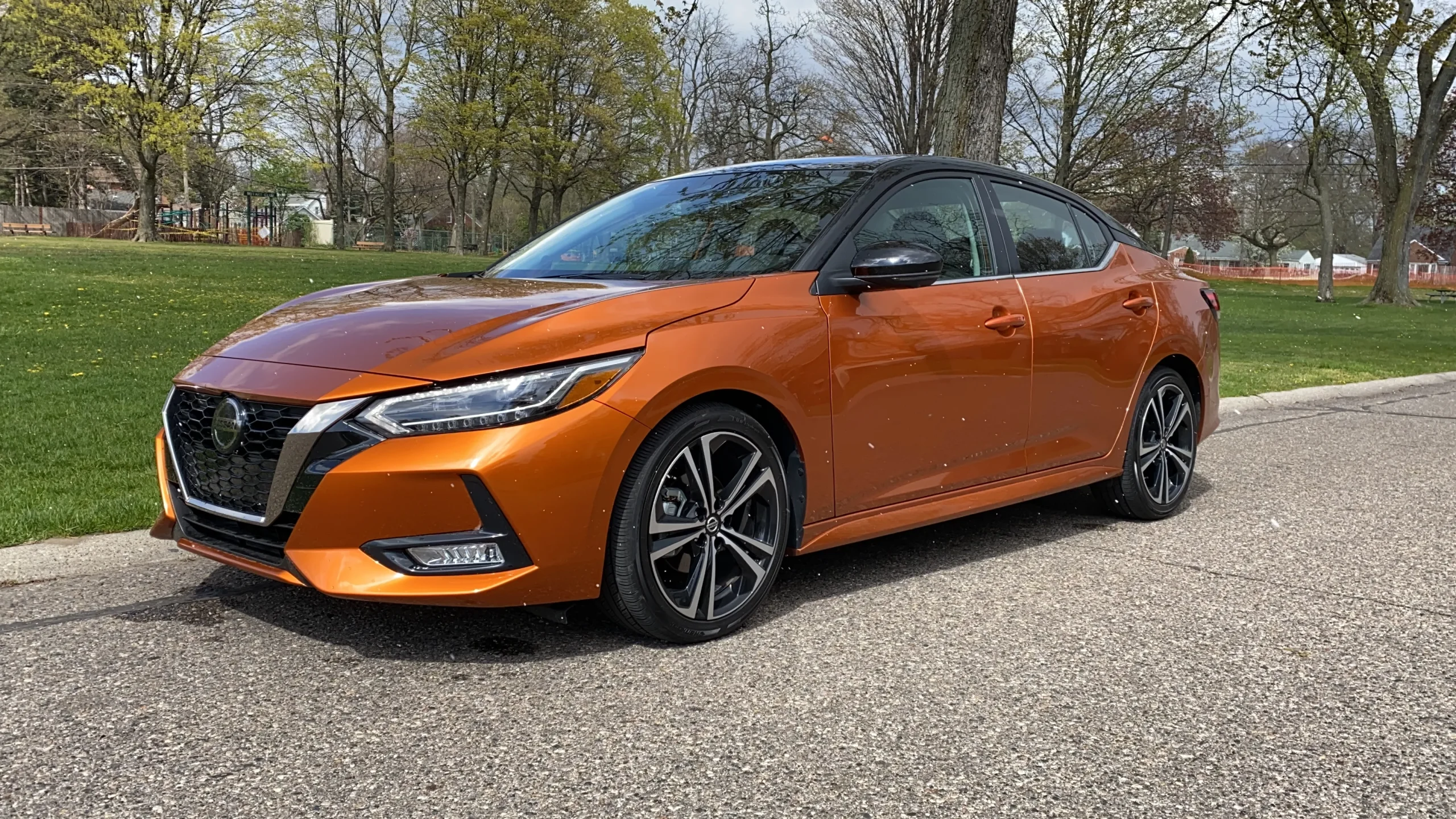
Another factor is the engine noise. The Sentra’s engine, while efficient, is far from quiet.
At higher RPMs, the engine can become quite loud and intrusive inside the cabin, making it harder to have conversations or enjoy music without cranking up the volume.
For anyone looking for a quiet ride, the Sentra may not be the best choice, especially as the years go on.
2. Honda Civic (2016–2021)
The Honda Civic is one of the most popular compact cars on the market, known for its sporty feel and reliability.
However, despite its strong reputation, the 2016–2021 models are often criticized for their noisy and creaky cabins, especially compared to competitors in the same price range.
One major issue with the Civic is the road noise that enters the cabin. While the car handles well on the road, the cabin doesn’t do much to isolate the outside sounds.
The tires tend to hum loudly on highways, and wind noise is also a common complaint. This is largely due to the thin glass used in many models, which doesn’t block out much of the external noise, especially at high speeds.
The interior materials in the Civic also contribute to its loudness. While the design is sleek and modern, the abundance of hard plastic surfaces can cause vibrations and creaks.
The door panels, dashboard, and center console are known to develop noise, particularly when driving on uneven roads. This becomes more noticeable as the car ages, as these materials wear and begin to lose their tight fit.
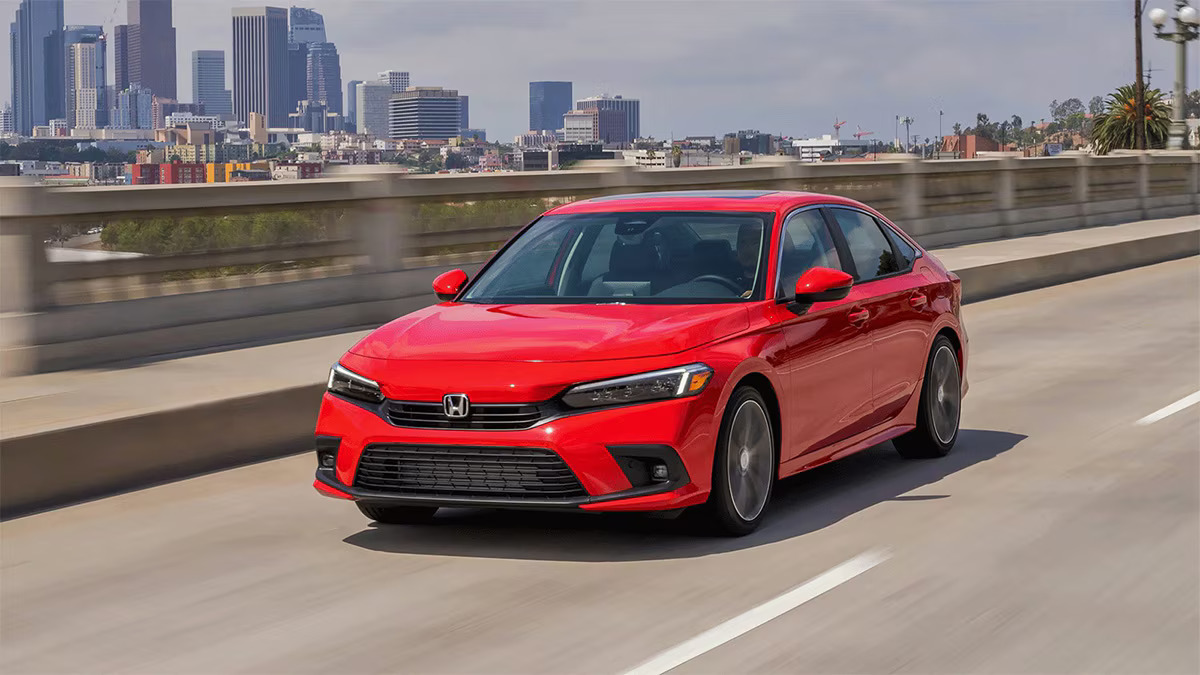
Additionally, the engine in the Civic, especially in the turbocharged variants, can be loud during acceleration. While it’s designed to be sporty, the noise can become intrusive during long trips, making the driving experience less relaxing.
For a car that promises sporty handling and efficiency, the Civic’s cabin can be a bit too loud for those seeking a quiet and refined ride.
3. Ford Fiesta (2017–2020)
The Ford Fiesta, while known for its nimble handling and compact design, doesn’t fare well when it comes to cabin comfort, particularly regarding noise levels.
The 2017–2020 models are notorious for their creaky and loud cabins, which can detract from an otherwise fun driving experience.
One of the primary issues is the road noise. Due to its small size and lightweight construction, the Fiesta doesn’t have the same level of sound insulation that larger, more expensive cars provide.
As a result, the sounds of tire noise, road bumps, and wind rushing by become much more noticeable, especially at higher speeds. The car lacks the thicker windows and additional dampening materials that help block out these noises in competing models.
The interior build quality also contributes to the noise problems. Many owners report that the hard plastic surfaces inside the Fiesta begin to rattle and creak as the car ages.
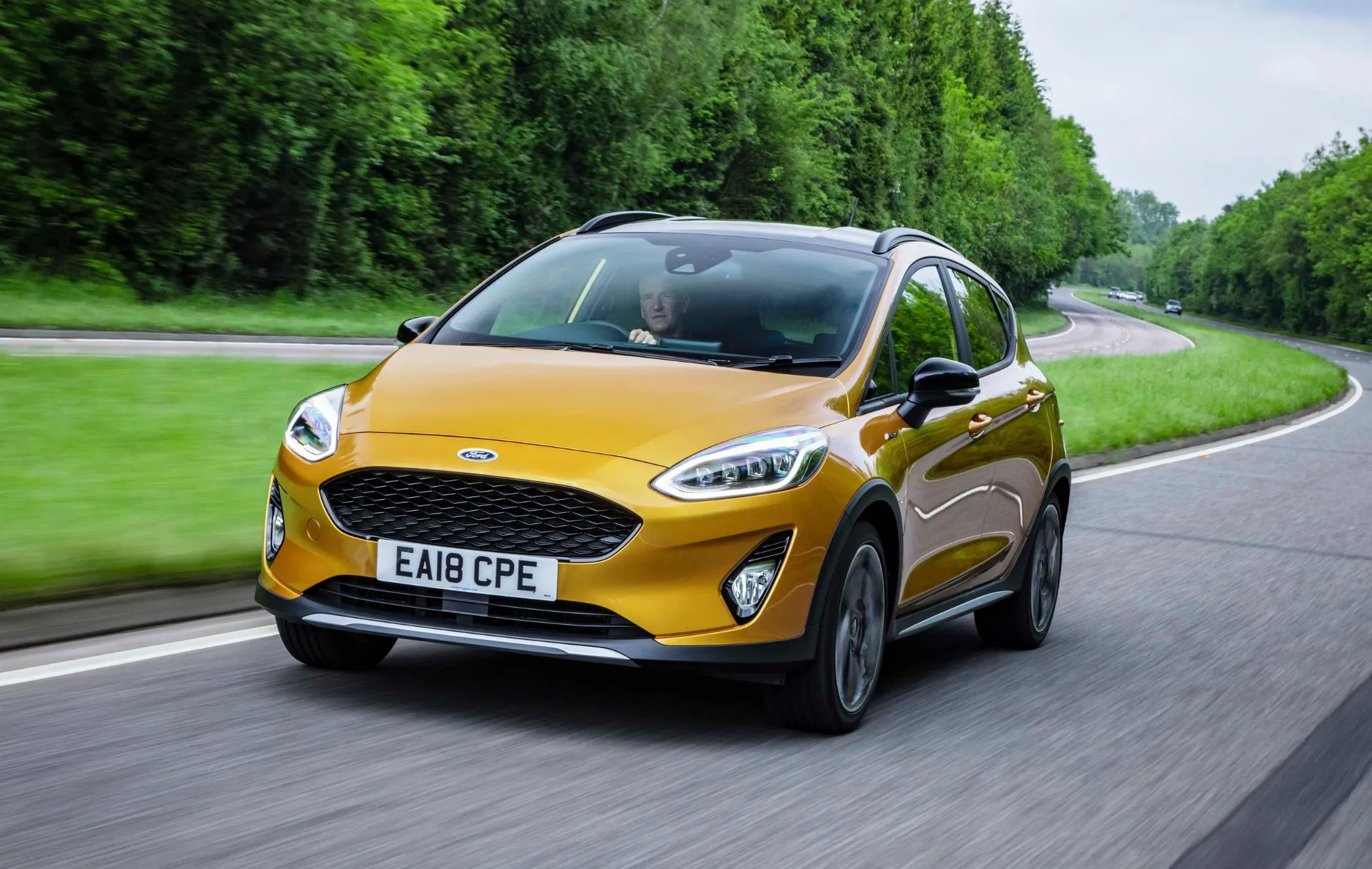
The dashboard, door panels, and even the seatbacks can develop unsettling noises, especially on rougher roads or during sharp turns. These sounds often get louder as the car gets older, and can be particularly annoying when you’re driving over potholes or uneven terrain.
The engine noise in the Fiesta is also another factor. While it’s a small, turbocharged engine designed for efficiency, it can sound rather loud, especially during acceleration or when the car is under load.
For a compact car, the Ford Fiesta’s cabin could benefit from significant noise reduction to make it more comfortable for daily commutes and longer trips.
4. Chevrolet Malibu (2016–2020)
The Chevrolet Malibu, a midsize sedan, often gets praised for its stylish design and comfortable ride. However, its reputation for a noisy and creaky cabin has been a consistent complaint from owners of the 2016-2020 models.
One of the biggest factors contributing to the Malibu’s loud interior is the road noise. While the car’s suspension system is generally smooth, it doesn’t do enough to block out the sounds of rough pavement or tire hum.
The thin windows and minimal soundproofing materials allow road noise to permeate the cabin, which becomes especially noticeable on highways and at higher speeds.
The cheap interior materials also make the car prone to squeaks and rattles. The door panels and dashboard are constructed using hard plastics that can vibrate and produce annoying sounds.
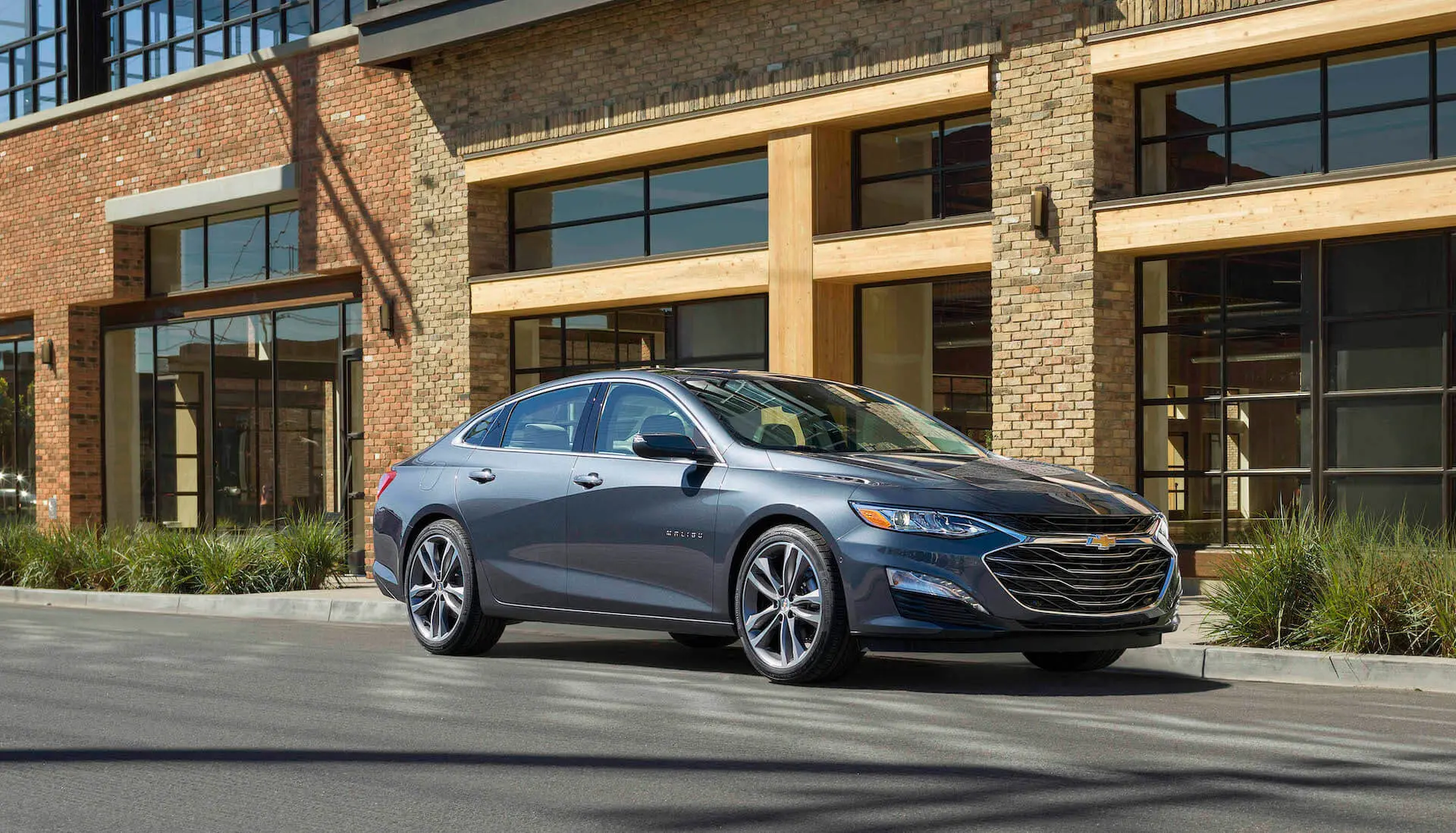
These creaks become more prominent as the car ages, especially if the seals around the doors and windows degrade over time. As a result, owners often report a drop in interior quality after several years of use.
Additionally, the Malibu’s engine is somewhat noisy during acceleration. While the car offers a smooth ride under normal driving conditions, when pushed harder or when the engine revs higher, the cabin can become filled with intrusive engine sounds that make it hard to have a conversation or enjoy music.
Despite its comfort and features, the Chevy Malibu struggles with noise isolation, making it less suitable for those who prefer a quieter, more refined cabin experience.
5. Hyundai Elantra (2017–2020)
The Hyundai Elantra, while known for its value and efficiency, struggles in terms of interior quietness, particularly in the 2017-2020 models.
For a compact sedan, the Elantra falls short when it comes to creating a peaceful, serene driving environment, as it is often plagued by loud and creaky cabin noises.
One of the main culprits is the road noise. The Elantra’s lightweight design and lack of advanced soundproofing allow outside noises to seep in, especially on highways or rougher roads.
Wind noise can become intrusive at higher speeds, and the road hum from the tires is noticeable inside the cabin. Unfortunately, Hyundai didn’t prioritize noise isolation in this model, leaving passengers exposed to much more external sound compared to competitors.
Additionally, the interior materials of the Elantra contribute to its noisy reputation. The use of hard plastics throughout the cabin leads to a build-up of creaks and rattles over time.
As the car ages, these noises tend to worsen, especially in the dashboard, center console, and door panels. The vibrations from driving on uneven surfaces exacerbate these issues, creating an overall uncomfortable experience.
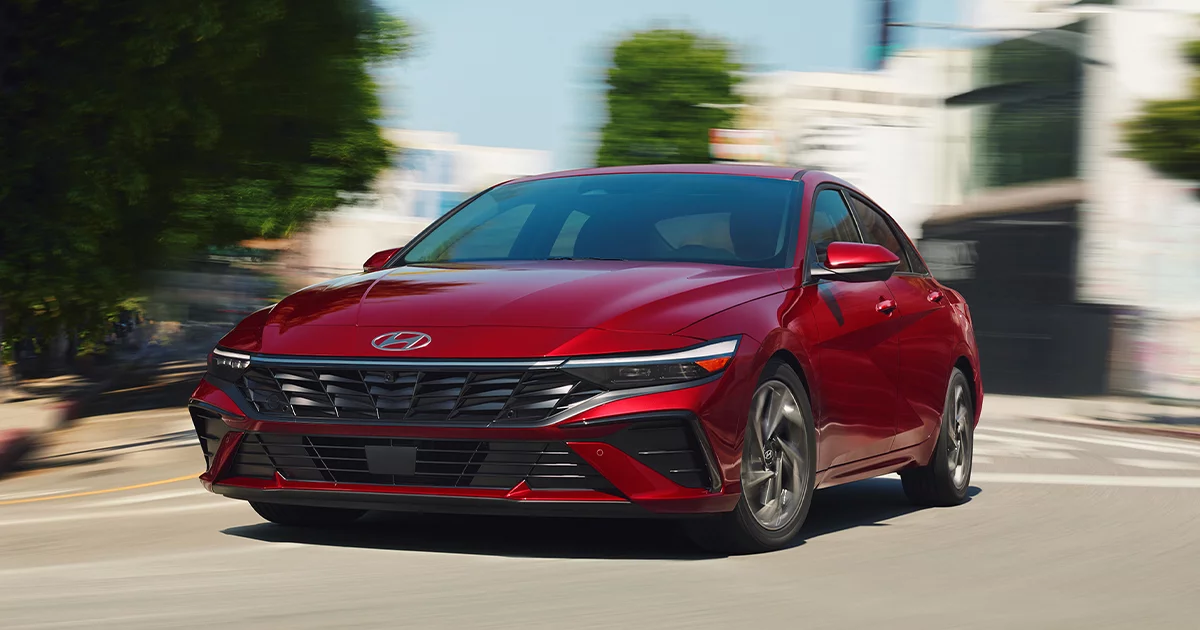
The engine in the Elantra, while efficient, can also be loud under acceleration. Although it’s designed for economy rather than performance, the engine can become noticeably loud, particularly in the higher RPM range, making the driving experience feel less refined.
For anyone seeking a quiet and smooth ride, the Hyundai Elantra’s cabin noise may prove to be a dealbreaker.
When it comes to the quietness of a car’s cabin, it’s clear that certain models go the extra mile to ensure a serene and refined driving experience, while others fall short.
The 5 Cars With Quiet Cabins—such as the Toyota Avalon, Lincoln Continental, and Mercedes-Benz E-Class—demonstrate that attention to sound insulation, high-quality materials, and advanced noise-reduction technologies can transform a car into a peaceful oasis.
These vehicles excel not only in providing a quiet ride but also in ensuring that road, engine, and wind noises are kept at bay, creating an environment where passengers can enjoy a smooth and comfortable experience, even on long drives.
On the other hand, the 5 Cars That Are Loud and Creaky—including the Nissan Sentra, Honda Civic, and Ford Fiesta—highlight the importance of soundproofing and interior build quality.
These cars, while affordable and efficient, often suffer from noticeable road noise, rattling interior parts, and loud engine sounds, which can make the driving experience less enjoyable.
The noise levels increase as these cars age, with creaks and vibrations becoming more prominent over time.
These vehicles may offer good value and practicality, but their cabins are far from serene, and they can be a source of frustration for those who prioritize comfort and quietness.
Ultimately, the decision between a quiet, refined cabin and a noisier, more economical ride comes down to personal preference and priorities.
Whether you’re looking for the calm of a luxury sedan or willing to put up with the loudness of a compact car, it’s important to consider how noise impacts your overall driving experience.
Also Read: 5 Cars With Great Factory Warranties and 5 With Useless Coverage

